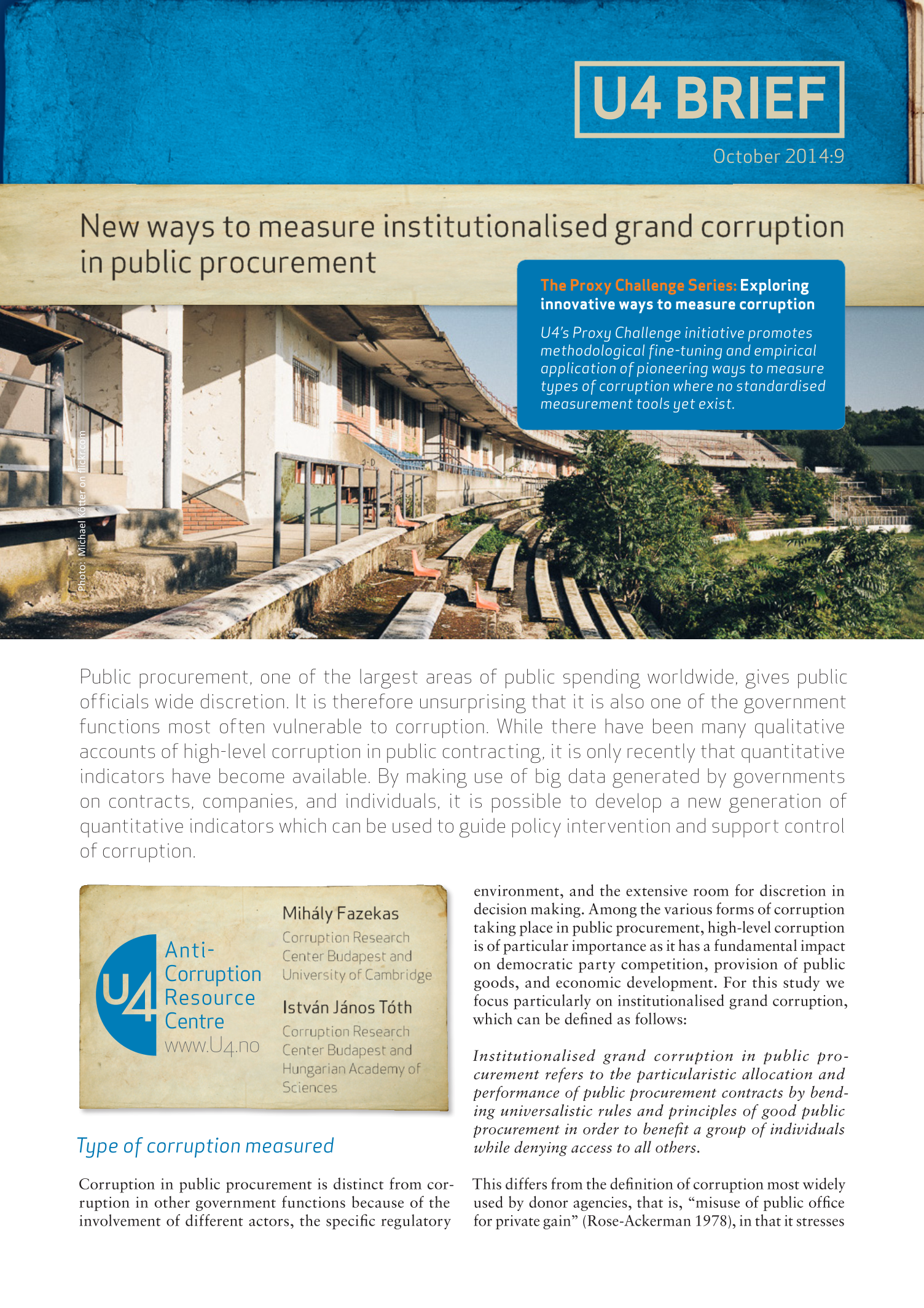U4 Brief
New ways to measure institutionalised grand corruption in public procurement
Public procurement, one of the largest areas of public spending worldwide, gives public officials wide discretion. It is therefore unsurprising that it is also one of the government functions most often vulnerable to corruption. While there have been many qualitative accounts of high-level corruption in public contracting, it is only recently that quantitative indicators have become available. By making use of big data generated by governments on contracts, companies, and individuals, it is possible to develop a new generation of quantitative indicators which can be used to guide policy intervention and support control of corruption.

Cite this publication
Tóth, I.; Fazekas, M. (2014) New ways to measure institutionalised grand corruption in public procurement. Bergen: Chr. Michelsen Institute (U4 Brief 2014:9) 4 p.
Disclaimer
All views in this text are the author(s)’, and may differ from the U4 partner agencies’ policies.
This work is licenced under a Creative Commons Attribution-NonCommercial-NoDerivatives 4.0 International licence (CC BY-NC-ND 4.0)


